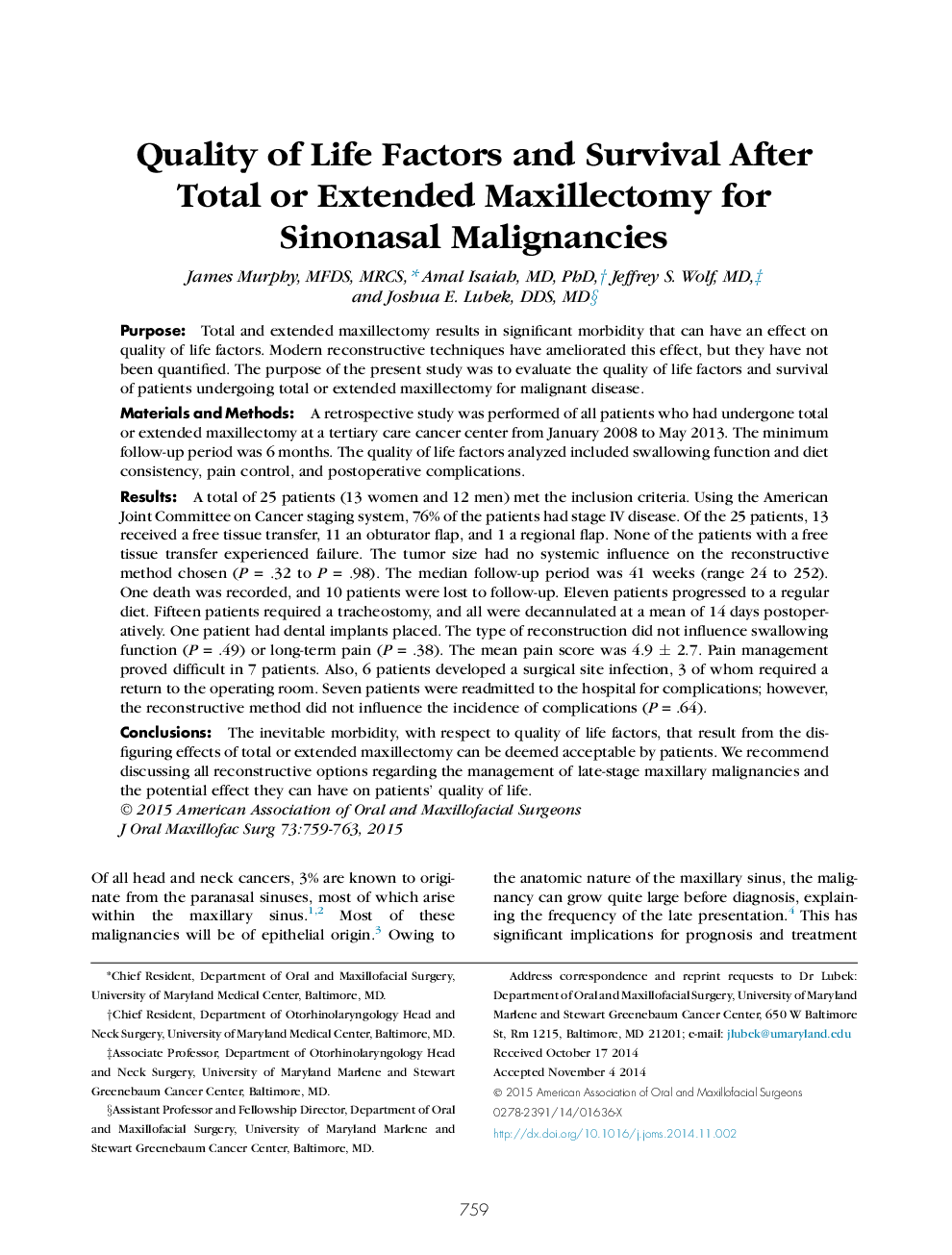| Article ID | Journal | Published Year | Pages | File Type |
|---|---|---|---|---|
| 3153159 | Journal of Oral and Maxillofacial Surgery | 2015 | 5 Pages |
PurposeTotal and extended maxillectomy results in significant morbidity that can have an effect on quality of life factors. Modern reconstructive techniques have ameliorated this effect, but they have not been quantified. The purpose of the present study was to evaluate the quality of life factors and survival of patients undergoing total or extended maxillectomy for malignant disease.Materials and MethodsA retrospective study was performed of all patients who had undergone total or extended maxillectomy at a tertiary care cancer center from January 2008 to May 2013. The minimum follow-up period was 6 months. The quality of life factors analyzed included swallowing function and diet consistency, pain control, and postoperative complications.ResultsA total of 25 patients (13 women and 12 men) met the inclusion criteria. Using the American Joint Committee on Cancer staging system, 76% of the patients had stage IV disease. Of the 25 patients, 13 received a free tissue transfer, 11 an obturator flap, and 1 a regional flap. None of the patients with a free tissue transfer experienced failure. The tumor size had no systemic influence on the reconstructive method chosen (P = .32 to P = .98). The median follow-up period was 41 weeks (range 24 to 252). One death was recorded, and 10 patients were lost to follow-up. Eleven patients progressed to a regular diet. Fifteen patients required a tracheostomy, and all were decannulated at a mean of 14 days postoperatively. One patient had dental implants placed. The type of reconstruction did not influence swallowing function (P = .49) or long-term pain (P = .38). The mean pain score was 4.9 ± 2.7. Pain management proved difficult in 7 patients. Also, 6 patients developed a surgical site infection, 3 of whom required a return to the operating room. Seven patients were readmitted to the hospital for complications; however, the reconstructive method did not influence the incidence of complications (P = .64).ConclusionsThe inevitable morbidity, with respect to quality of life factors, that result from the disfiguring effects of total or extended maxillectomy can be deemed acceptable by patients. We recommend discussing all reconstructive options regarding the management of late-stage maxillary malignancies and the potential effect they can have on patients' quality of life.
